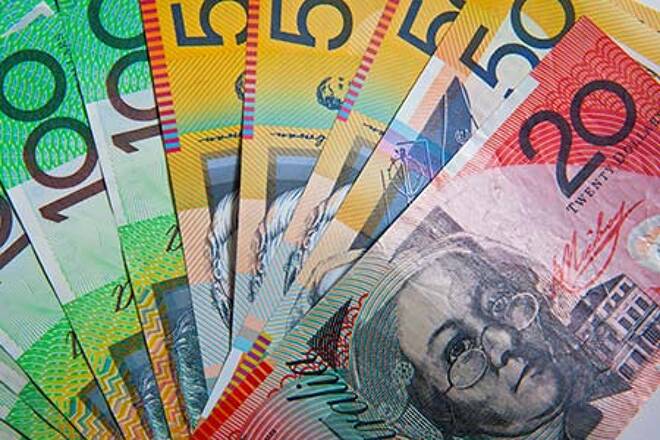Advertisement
Advertisement
AUD/USD and NZD/USD Fundamental Daily Forecast – Widening Interest Rate Differential Favors Aussie, Kiwi
By:
The Australian and New Zealand Dollars posted volatile, two-sided price action on Wednesday before finishing sharply higher for the session. Early in the
The Australian and New Zealand Dollars posted volatile, two-sided price action on Wednesday before finishing sharply higher for the session. Early in the session, the weaker price action was driven by disappointing Australian consumer inflation data and dovish talk from a Reserve Bank of Australia official, but by the end of the session, the primary focus for investors was the dovish Fed monetary policy statement, lower Treasury yields and the weaker U.S. Dollar.
The AUD/USD settled the session at .8005, up 0.0069 or +0.87% and the NZD/USD closed at .7520, up 0.0103 or +1.38%.
Early Wednesday, the Aussie and the Kiwi were under pressure, led by a disappointing 0.2% rise in quarterly consumer inflation. Investors were looking for an increase of 0.4%. The currencies were also capped by RBA governor Philip Lowe’s rather subdued outlook for the labor market and overall economy and strong hints that Australian interest rates would neither rise nor fall soon.
Even RBA deputy governor Guy Debelle’s dovish talk last Friday failed to have a lasting effect on the direction of the Australian Dollar.
The U.S. Federal Reserve left its benchmark interest rate unchanged as widely expected. However, the central bank laid the groundwork for winding down its massive stimulus program in September. The move is essentially yield-curve management. The Fed is saying that the economy is too weak to handle a full rate hike, but the central bank can continue to tighten gradually by trimming its $4.5 trillion balance sheet.
The Federal Reserve said they plan to start unwinding “relatively soon,” which investors interpreted to mean September, since previously the central bank hinted it would start in December.
Finally, the central bank also acknowledged that inflation remains below its 2 percent target.
U.S. Treasury yields fell after the Fed announcements. This indicates investors felt the central bank was dovish. The benchmark 10-year yield traded at 2.3 percent while the two-year yield held around 1.363 percent.
The drop in Treasury yields widened the spread between Australian and New Zealand Government Bonds and U.S. Government Bonds, helping to make the U.S. Dollar a less attractive investment.
Forecast
The early price action on Thursday strongly indicates that the AUD/USD and NZD/USD have momentum on their side. The current price action also suggests that the Reserve Bank of Australia and the Reserve Bank of New Zealand can do little to stop the rally outside of an interest rate cut (and that’s not happening). Other than profit-taking due to overbought conditions, I can’t see anything in the near future that can derail the rally.
Continue to monitor the price action on the charts and the interest rate differential between Australian and New Zealand debt and U.S. Treasury debt. The Aussie and Kiwi are getting their cues from the yield spread, and as long as it is widening, these two currencies are going to be move attractive investments than the U.S. Dollar.
About the Author
James Hyerczykauthor
James is a Florida-based technical analyst, market researcher, educator and trader with 35+ years of experience. He is an expert in the area of patterns, price and time analysis as it applies to futures, Forex, and stocks.
Did you find this article useful?
Latest news and analysis
Advertisement
